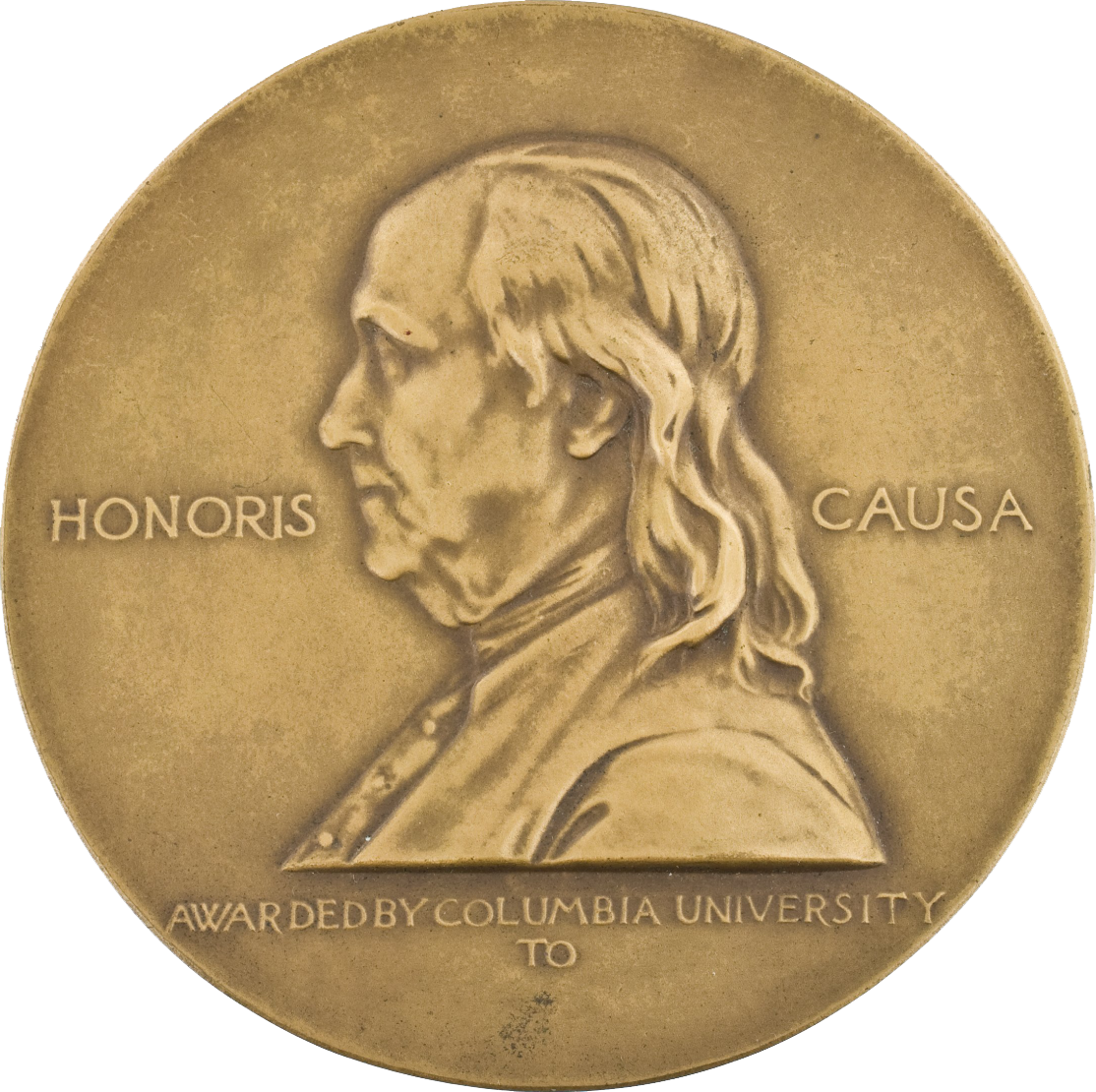Writing lessons from 2024 Pulitzer Prize winners
How to write better ledes, explain complex concepts and choose key details.

Good ledes make Tom Corfman feel warm and fuzzy, which is why he loves directing RCG’s Build Better Writers program.
Today’s communicators should get employees talking as much about their corporate newsletters and intranet stories as New Yorkers talked about Joseph Pulitzer’s World more than 140 years ago.
The Hungarian immigrant purchased the money-losing paper with a small circulation in May 1883. From the start, he relentlessly focused on readers and instructed his staff to do the same.
“‛Did you see that in the World?’ should be asked [by readers] every day and something should be designed to cause this,” Pulitzer said, according to James McGrath Morris’ 2010 biography.
By late 1884, the World was the biggest newspaper in the country, widely credited with the election of Grover Cleveland as president, and very profitable, Morris wrote.
Pulitzer built that readership in part by sensationalizing stories, but also by introducing innovations, such as comics, illustrations, coverage of sports and fashion, and crusading investigative reporting. He also put a premium on writing.
“For Pulitzer a news story was always a story,” Morris wrote. “He pushed his writers to think like Dickens.”
It’s fitting that we find writing tips by reading Pulitzer Prize winners. A year ago, we found good examples of ledes, or opening sentences. Now we illustrate three more lessons from the prize winners announced this month.
1. Try different ledes. Five reporters from ProPublica won for public service for their series of stories about U.S. Supreme Court Justices Clarence Thomas and Samuel Alito, an investigation that pushed the court to adopt its first code of conduct.
When writing a lede or the first couple sentences to a story, it helps to try out different styles, such as hard news, anecdotal or direct address to the reader.
Major newspapers increasingly give readers alternative starts to major stories: an online version, which takes advantage of the visual power of the web, and a written-word version better suited for print. ProPublica is an online publication, but the first story in the high court series, “Clarence Thomas and the Billionaire,” demonstrates both approaches.
The story grabs your attention with a slide show of photos. First, Thomas and billionaire Harlan Crow, then as you scroll down you see Crow’s yacht, jet and private resort. The images are accompanied by this text:
For over 20 years, Supreme Court Justice Clarence Thomas has been treated to luxury vacations by billionaire Republican donor Harlan Crow.
He goes on cruises in far-flung locales on Crow’s yacht, flies on his private jet and keeps company with Crow’s powerful friends at the billionaire’s private resort.
The extent of Crow’s largess has never been revealed. Until now.
Why it works. The four sentences form a hard news lede that could stand alone, each sentence building upon the one before. Yet at the same time, the sentences serve as captions to the photos.
After the photos, the story begins with a different approach:
In late June 2019, right after the U.S. Supreme Court released its final opinion of the term, Justice Clarence Thomas boarded a large private jet headed to Indonesia. He and his wife were going on vacation: nine days of island-hopping in a volcanic archipelago on a superyacht staffed by a coterie of attendants and a private chef.
If Thomas had chartered the plane and the 162-foot yacht himself, the total cost of the trip could have exceeded $500,000. Fortunately for him, that wasn’t necessary: He was on vacation with real estate magnate and Republican megadonor Harlan Crow, who owned the jet—and the yacht, too.
Why it works. The opening introduces the reader to the story with an example of the two men’s travels, with just enough detail to convey the luxury of the trip.
Anecdotal ledes need a transition. Tell the readers where we’re going. Usually that transition is a nut graph, a paragraph or two that sums up the story. This anecdote ends differently, with a surprise—guess who paid for the trip? We call that a hook. (If it’s a lighter story, we call it a punchline.)
“The nut does not always require a full paragraph,” writing coach Roy Peter Clark says. “It can be a nut word, nut phrase, nut sentence, nut paragraph.” He’s again chosen the best lede among the Pulitzer finalists.
2. How to simplify. Sarah Stillman, a staff writer at The New Yorker, won for explanatory reporting for, “What Makes a Murderer?” an examination of felony murder charges.
She begins by telling the story of the family of a victim in a 2012 Florida case in which Sadik Baxter was charged with felony murder. Felony murder, she writes, is:
…a sweeping and uniquely American legal doctrine, often couched in terms of justice for victims’ families, called felony murder. To engage in certain unlawful activities, the theory goes, is to assume full responsibility if a death occurs—regardless of intent.
The precipitating offenses in this case: Sadik Baxter had searched five cars for stray cash before surrendering when cops appeared, and O’Brian Oakley, his twenty-six-year-old friend, had fled the scene, lost control of his car in a police chase, and killed the bicyclists. The prosecution charged both men with two counts of felony murder in the first degree.
Why it works. As you’d expect for a winner in this category, Stillman offers a clear definition of an obscure legal doctrine and the reason behind it. But what makes the definition understandable is her example, a concise application of the rule. An example often helps explain a complex concept.
3. Keep an eye open for details. The staff of the Lookout Santa Cruz won for breaking news reporting on the atmospheric river storms that devastated Capitola, a California coastal city of 61,800, and the surrounding area. The rain started on Dec. 31, 2022, and lasted 18 days.
Ken Doctor, a newspaper consultant, founded the news site in 2000 to test his theories about the news business. During the crisis, the staff of 10 turned out 86 blog updates and nearly 190 social media posts and alerts by email and text messages. Among the 23-written staff stories was this one, published near the end of the rains. The story was published four days after Gov. Gavin Newsom’s visit to the area, but isn’t about that.
Capitola Village’s magic has taken a beating, but you can help rekindle the #capitolalove
By Wallace Baine
Jan. 15, 2023The day the governor of California visited Capitola Village, he walked past a pile of ragged, waterlogged timber boards as he stepped into Zelda’s to see, among other things, a chunk of the Capitola Wharf that had gone through the restaurant’s ocean-view window.
There was no apparent reason for Gavin Newsom to notice this particular pile of distressed lumber in an environment of so much other debris. But a closer look reveals that these boards are part of the memorial benches along the seawall at Capitola Beach, removed by the city because of the storm that damaged the Esplanade the first week of January.
On the boards, piled in a heap, you can see the small memorial plaques embedded in the wood, evoking the departed who once loved this place. Here is Don Slivka, a Sacramento probation officer who vacationed with his family in Capitola for more than 40 years. And Marilyn Badeaux, a dynamo with an avid love of gardening and of Capitola. And Ellen Page Melton, a “true California girl” from Sacramento.
Not everyone has the opportunity to be memorialized in this way in this place.
Why it works. He starts the story with the governor’s visit, giving the lede some newsiness. (Names are news, the saying goes.)
The jumble of plaques and wood represents both people’s love of the place and its state of distress. But it’s the writer who sees the significance of this pile of broken boards, not the elected official, for whom there’s “no apparent reason” to notice.
Good writing comes from good reporting. Good reporting includes not just interviewing but observation. Blaine complements his eye for detail with reporting, learning enough about those after whom the benches were named.
Pulitzer’s gift
Good writing was so important to Pulitzer that when he died in 1911, his will funded the prizes that bear his name and the journalism school at Columbia University, where the topic would be part of curriculum.
He wrote in a 1904 article, after he announced his gift: “The importance and the rarity of a really good English style are so great that, to my own mind, this college will be worth all its cost if it shall succeed only in teaching the future generations of journalists what a wonderful art style is and how to perfect it in themselves.”
Follow RCG on LinkedIn.






